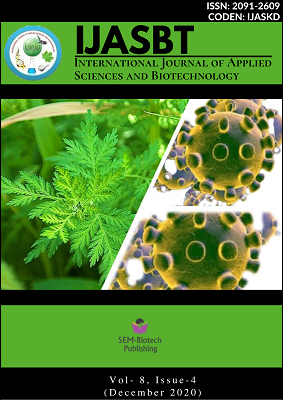Molecular Identity of Subterranean Termites
DOI:
https://doi.org/10.3126/ijasbt.v8i4.32445Keywords:
COI gene, Genbank accession, Molecular characterisation, TermitesAbstract
Identification of termites is a challenging task due to variable morphological differences among species and their eusocial behaviour with different caste system. A method for easy and accurate species-level identification at any life stage is required. In this study, a 658-base pair region of the mitochondrial cytochrome oxidase I (COI) gene was used to explore its utility in the identification of important subterranean termites. Termite specimens collected from 25 locations from various states, were characterized using specific primers for their identification. Sequence analysis and divergence among the species was assessed. The composition of the mitochondrial sequence of the COI gene in the present study was expectedly AT biased. GenBank accession numbers were obtained for the species. Sequence analysis and divergence among the species was assessed, which revealed significantly high percentage of A+T base composition. Molecular sequence information from NCBI revealed relatedness in all the collected termites, accurately as revealed by their morphological characters. The studies indicate the relevance of DNA sequencing to match different forms of termites and address ambiguities in morphological identification. The information on species diversity would help plan strategies for management of termites.
Int. J. Appl. Sci. Biotechnol. Vol 8(4): 410-416




